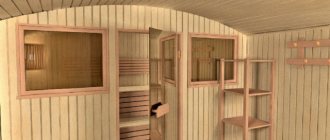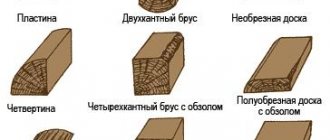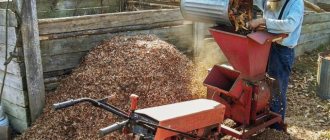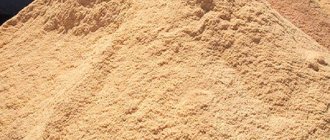As you know, there is no smoke without fire, and woodworking or logging cannot exist without illiquid wood residues and corresponding production waste. Chips, sawdust, trimmings, shavings, knots and saw cuts of all shapes and sizes: this is an incomplete list of what the woodworking industry leaves behind.
And it seems that such use of wood is irrational, because there remains so much unclaimed raw material resource, which many Russian industrialists prefer to get rid of in the most prosaic ways possible: burning, transporting it to landfills, or even organizing a spontaneous landfill somewhere outside the city.
Then wouldn’t it be better in this case for forest industry enterprises to switch to comprehensive and, most importantly, waste-free wood processing? A number of Russian companies have already made similar transformations in their production, including Vologda Forest LLC, SibirEkoStroy (in particular, an enterprise in Severouralsk), the Altailes timber industry holding, ULK Group of Companies and other key players in the woodworking market.
Why can’t the transition be immediate, and what problems do representatives of the forestry industry have with organizing the processing of wood waste?
Types of wood waste
- Tree crown waste.
- Various pieces of lumber.
- Chips and sawdust.
- Small branches.
- Parts of logs.
- The greenery of the trees.
- Leaves
- Waste from sawing wood.
- Waste from processing trees and so on.
- Wood waste can be deciduous or coniferous.
Wood waste groups
- 1st group. This includes such remains as slabs, under-slabs, and tree tails. These types of wood debris appear when sawing logs into planks.
- The 2nd group includes various scraps, particles, pencils. This group also includes rejected trees. Such residues are formed during the production of various wooden products.
- The 3rd group includes scraps from boards, plywood, chipboard, that is, leftovers from finished parts. This includes various remains that appeared after the dismantling of buildings or renovation of rooms.
- The 4th group includes small residues such as bark, sawdust, dust after sanding trees. Thanks to the remains of the fourth group, wood panels are created using special glue and equipment.
Mechanical processing methods
The most common methods are using high temperature or special mechanical grinders. They are widespread due to their low cost and low maintenance requirements.
You may also like: Tire recycling
Shredders
There are rotary, drum, disk. Wood residues are converted into chips of a given size, which facilitates transportation or subsequent processing of raw materials. There are portable shredders for small businesses that can be constantly transported to the desired location.
Hammer crushers
Suitable for any type of wood, including very hard ones. Crushers are attached to the rotor and hit the residue with force. As a result, the wood is crushed into small chips suitable for disposal.
Crushing machines
They process waste into very small particles. There are options with different power and load sizes. The size of the finished chips can also be calibrated using a number of settings.
Furnaces
This method has its advantages, since combustion produces heat, which can be used to heat water or heat a home. A cheap method that does not require costs or maintenance.
Where does waste come from?
They are formed during deforestation. Here they get bark and branches. Also, when sawing, small splinters may form.
Waste from organizations that produce wood products. For example, furniture factories. Here waste is generated when they are divided, cut, and so on.
Separation of waste according to the nature of biomass
Waste that remains from the crown of trees. Small branches remain. Their thickness is very small. Therefore they cannot be used for production. Basically, such parts are destroyed and then other resources are formed.
Debris from tree trunks. There may be logs, various cuts, small debris, and so on. These parts are crushed and then the product is made from them.
It is better not to destroy bark waste. With the help of bark you can obtain humus, fertilizer, and fuel.
If there is rot on the waste and the size is more than half, then it is used only for heating.
What is produced from the remains of the wood industry
Of the largest wastes, which we classified as the first group, large and bulky products are usually produced.
- Shields;
- Parquet;
- Barrels;
- Pallets
- and so on.
Wood processing waste is used in the furniture industry and construction industry. Waste that is not suitable for recycling is used as fuel. When such material is burned, electrical energy, thermal energy, steam and hot water can be produced.
Lump material is used in the pulp and paper industry, and wood chips are used as a filter in wastewater and oil residue treatment plants.
Although wood waste does not pose a threat to humans or the environment, it must be disposed of. This will greatly help solve the problem of unsustainable deforestation.
Features of the use of wood waste
With the help of large wood waste of the first group, parquet boards, barrels, boxes, and so on are created.
- Can be used as roofing material.
- The shavings are used as a water purifier in filters.
- Wood waste is also used in the production of furniture products.
- Tree waste is used when it is necessary to light a stove in a bathhouse or at home.
- You can make containers out of them.
- They produce various household items.
- The bark is used in construction.
- And sawdust is used to prepare fuel braces.
- Wood scraps are widely used in construction. For example, insulating the walls of houses.
- When waste is burned, electricity and steam are generated.
- Plastic can be obtained using leftovers. And then they produce various toys, sports equipment, and so on.
- Alcohol is made.
Disposal methods
During the manufacturing process of wooden products, waste is generated. They are thrown into landfills if there is no capacity to process them. Recycling allows businesses to save on raw materials and also reduce the amount of waste thrown into landfills. This improves the environmental situation. There are several disposal methods, the most popular of which are described below.
Chemical method
Chemical processing of wood involves the use of appropriate substances, resulting in a new material for the production of various products. One of the simplest and most common methods of recycling is the production of paper and products made from it.
By adding chemicals, cellulose is obtained. It can be used to make varnish, film, paper, and some plastic containers.
Expert opinion
Alexandra Yu.
When thinking about environmental issues, it is important not only to sort, but also to reduce consumption.
Hydrolysis is the process by which fiber is loaded with sugar. This occurs under the influence of a catalyst. The result is alcohol, yeast, glucose and other substances useful in everyday life.
Sugar processing makes it possible to produce turpentine, combustion gases, vinegar, alcohol, etc. From sawdust, subject to hydrolysis technology, liquid fuel is obtained, the combustion products of which are completely safe for the environment.
Burning
Some people believe that recycling wood waste by burning is completely unsafe. The problem is to channel the resulting energy in the right direction. The combustion procedure allows significant savings in the production process, as well as reducing the amount of waste.
Expert opinion
Alexandra Yu.
When thinking about environmental issues, it is important not only to sort, but also to reduce consumption.
Blocks and briquettes are prepared from the resulting raw materials for use in solid fuel boilers. Typically, branches and tree stumps are used in ovens. The use of waste makes it possible to significantly reduce the number of trees cut down for heating purposes.
Mechanical method
A fairly simple and useful recycling technique. Using special shredders, wood is chopped into small pieces, which are then easier to recycle.
Secrets of making fuel briquettes
Mainly prepared from sawdust.
- A very popular method for heating a house.
- Fuel braces are created independently.
- Saves the family budget.
- Waste from pruning in the cold season can be used to prepare fuel briquettes. Just first you need to grind them.
- When producing fuel briquettes, a crusher is needed.
- It makes no sense to buy expensive equipment in order to create briquettes.
When preparing briquettes, simple things such as paper, cardboard, glue and clay can be used.
The process of creating briquettes
- First, the sawdust of the trees should lie in some water.
- The second step is to add water to the sawdust. Their ratio should be one to ten. You can also add paper or glue.
- The mixture is then poured into a special mold, which shrinks when pressed.
- The briquettes must be taken out and left to cool.
- The ash that is formed after making briquettes can be used as fertilizer.
Hazard class according to FKKO
According to the FKKO classification, clean wood waste belongs to hazard classes IV–V, that is, they do not pose a danger to nature , but there are situations in which the level of danger increases sharply.
For example, any waste doused with machine oil or gasoline is classified as hazard class III.
Despite the fact that dead wood, brushwood and fragments of trunks are classified as class V, that is, they are considered non-hazardous, they sharply increase the rate of spread of forest fires. Indeed, unlike living plants, in which sap flow maintains a high level of humidity and also reduces their flammability, these debris quickly lose moisture, which is why they become much more flammable and flammable.
Fertilizers from wood waste
Fertilizing from tree residues fills the soil with necessary substances.
Sawdust added to raspberries improves plant growth.
Bark is also used in waste production. Because it is rich in various chemical components.
Creation of pellets
- Made from sawdust.
- Used in a private home.
- During production, the same apparatus is used as during the production of braces. Only here there is also a granulator.
- Pellets with various impurities are used to heat production facilities
By adding various components, litter for cats is created.
Why is it profitable to work with ALON-RA?
- We strictly adhere to work deadlines - our fleet of special equipment includes more than 60 vehicles.
- We guarantee the quality of services - our staff of professionals has been working since 1998.
- We respond quickly - if there is unoccupied equipment, we will arrive within 30 minutes.
- We will adapt to the specifics of your business : night schedule, additional work, etc.
- There is no hassle with accounting - we work according to a standard contract, promptly provide all the necessary documents.
- Maximum benefits for regular customers : fixed price for services when concluding an annual contract, discounts for an advance payment system, free trash containers and other bonuses.
Waste recycling and business
This type of activity is not very popular.
- There is no competition. You can get clients in a short period of time.
- Raw materials can be bought profitably and found everywhere. It can be purchased constantly. It will not disappear from the market.
- Equipment for processing waste raw materials can be found from various manufacturers. Recycling is very simple. Everything was done very easily. It is not very difficult to understand how the recycling process is carried out.
- Sales of finished products are easy and simple. He will not wait for his client after production. It will be bought quickly.
- Low quality waste is used for incineration.
- Suppliers can be easily found.
- Payback is fast.
- It is profitable to invest money.
- A promising direction for organizations.
- Large organizations use the remaining wood in the second round.
Small companies buy wood. Leftovers are used incorrectly. So wood processing is not established in the organization.
Why should wood processing waste be disposed of?
Disposal of wood waste is necessary primarily for environmental reasons. After all, if the wood is not used 100%, many more trees will need to be cut down for the needs of humanity. As a result, deforestation occurs almost non-stop, and forests are becoming smaller every year.
In addition, sawdust disposal is often incorrect. Business owners often burn waste in close proximity to the sawmill, which creates a fire hazard. Sawdust also rots in landfills, releasing harmful carbon dioxide into the atmosphere.
Features of the chemical processing method
Products are formed that are necessary for various pulp organizations.
- Wood is processed using hydrolysis.
- Distillation is carried out using a method such as pyrolysis.
- Waste is processed at special enterprises.
Using the chemical method, you can obtain paper, various compounds from proteins, and so on.











